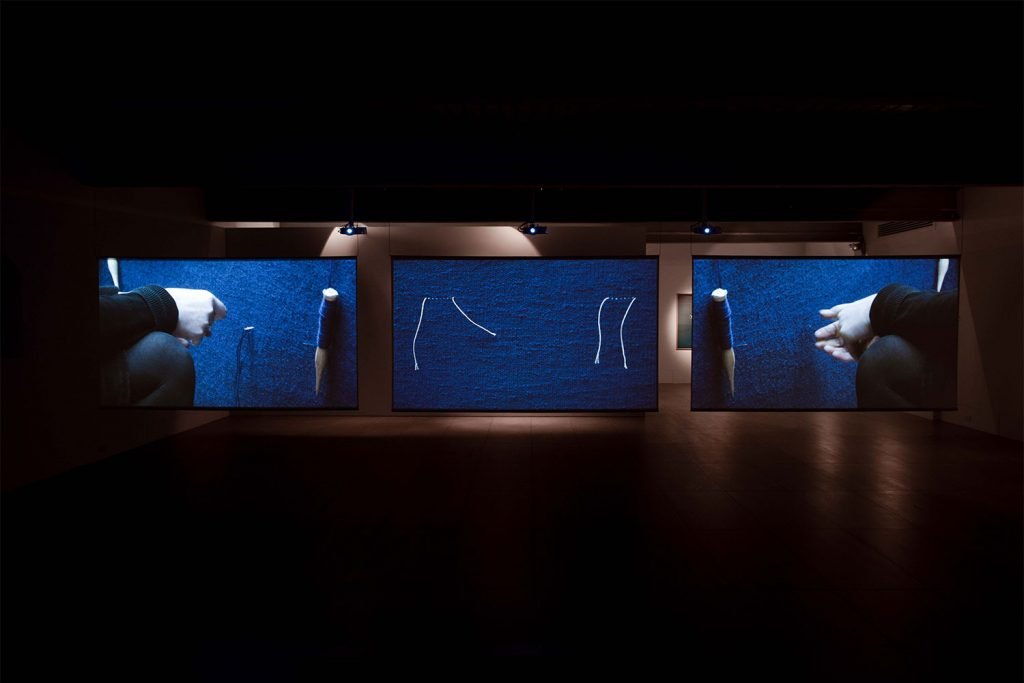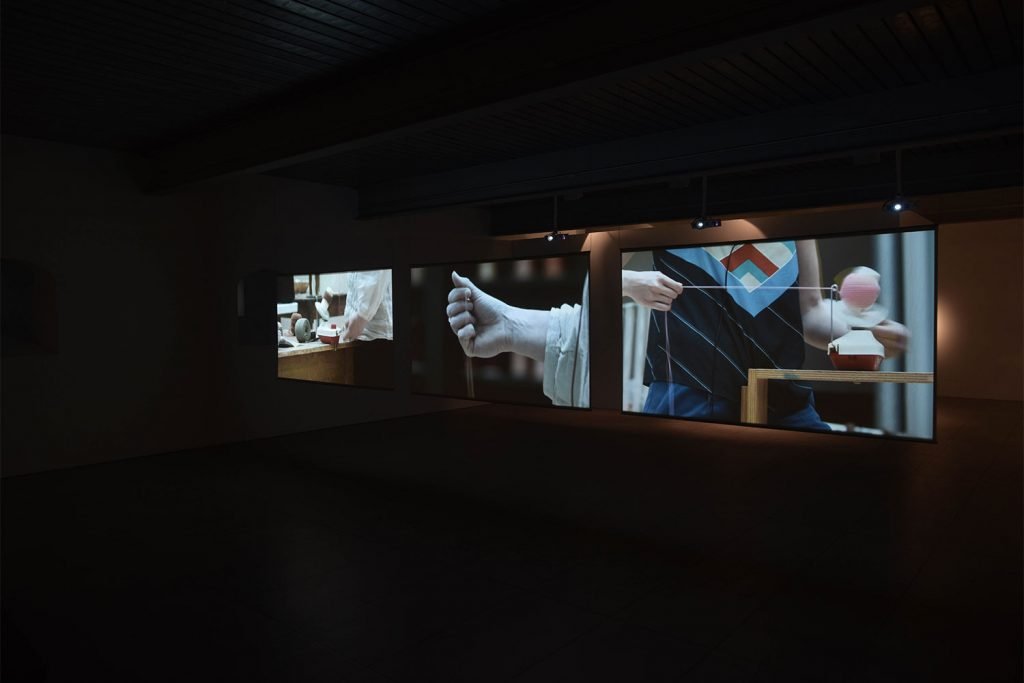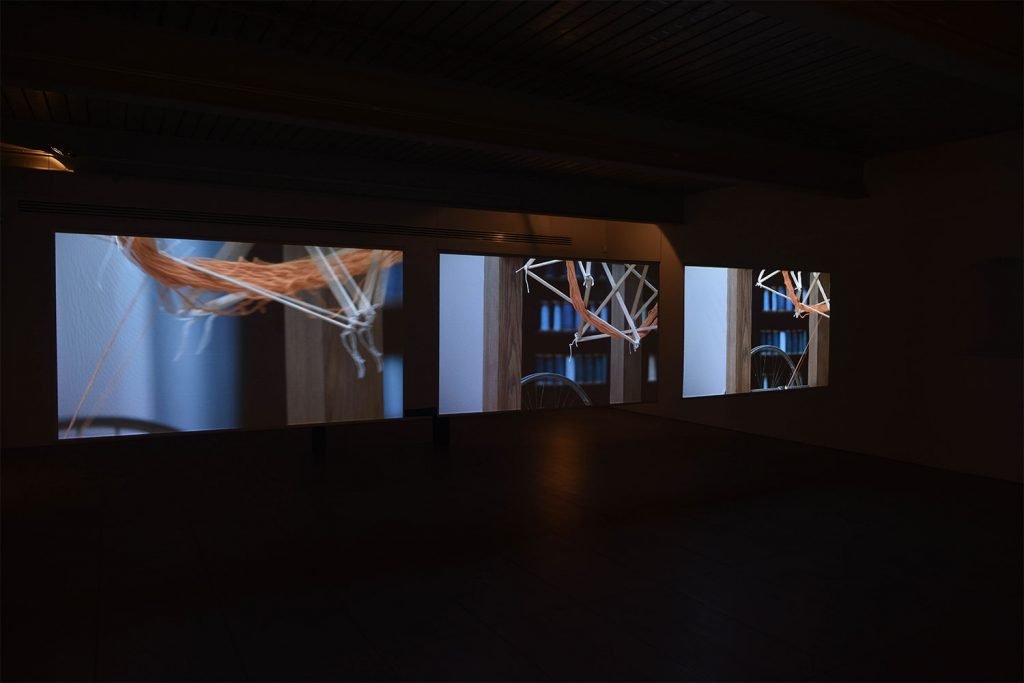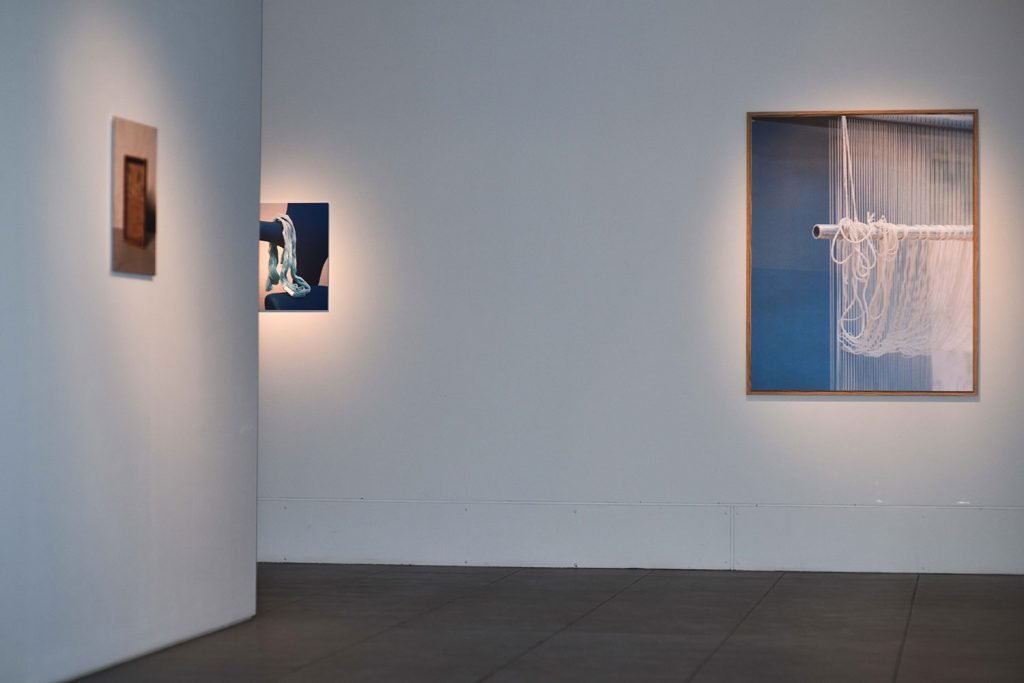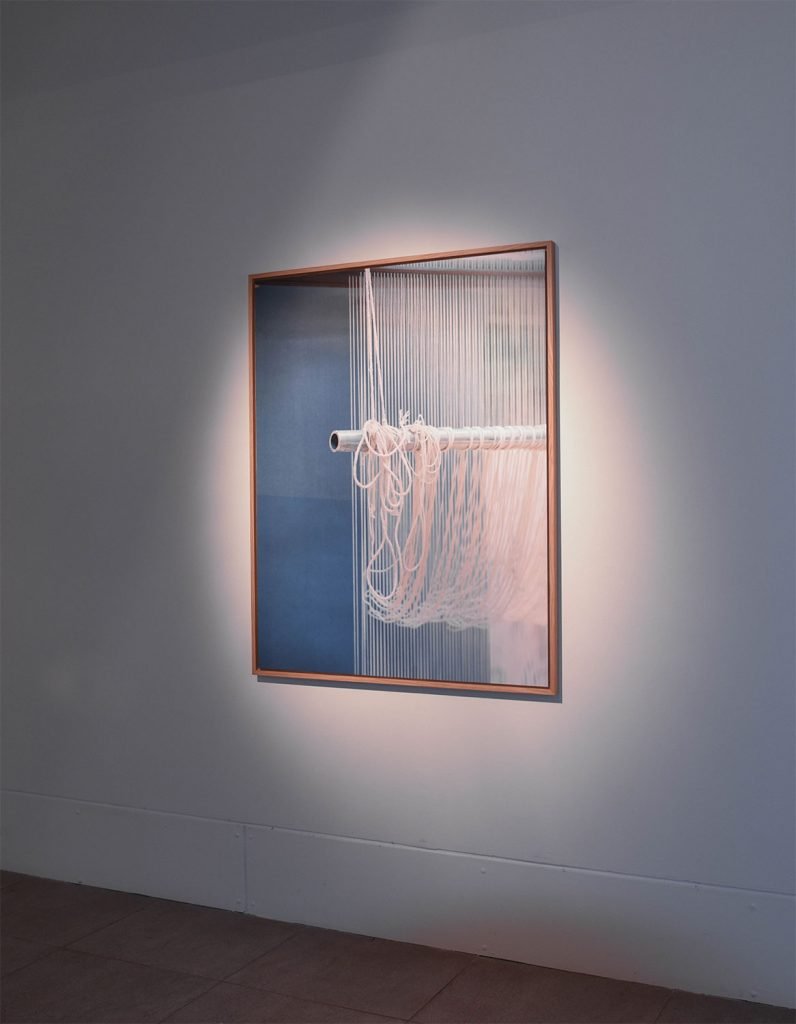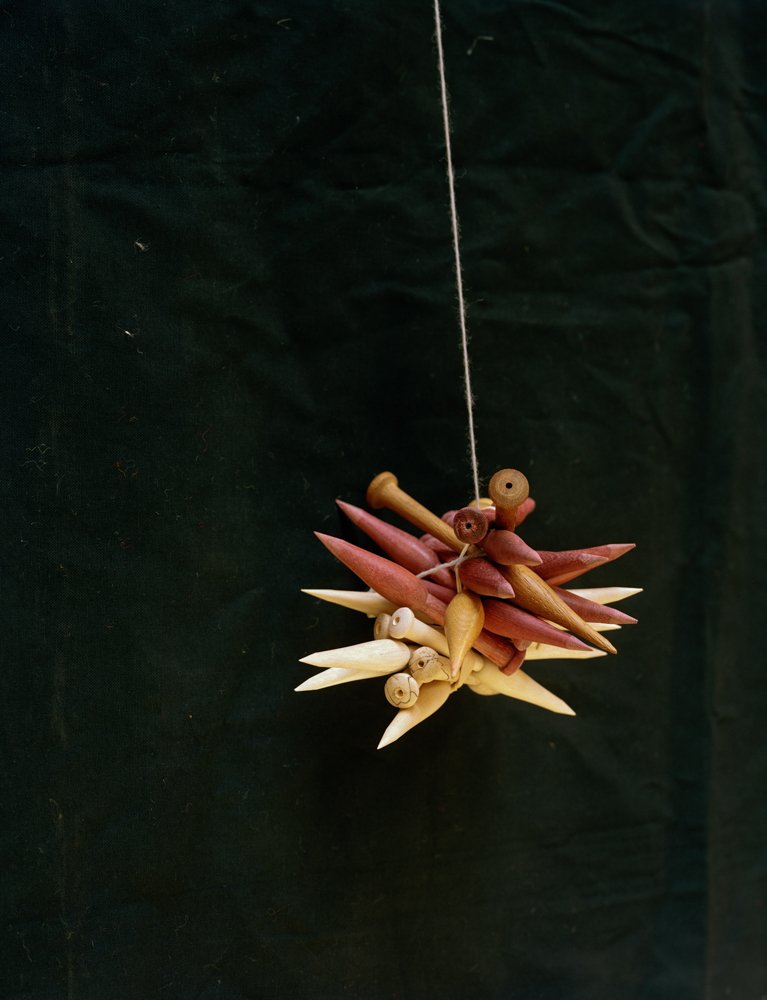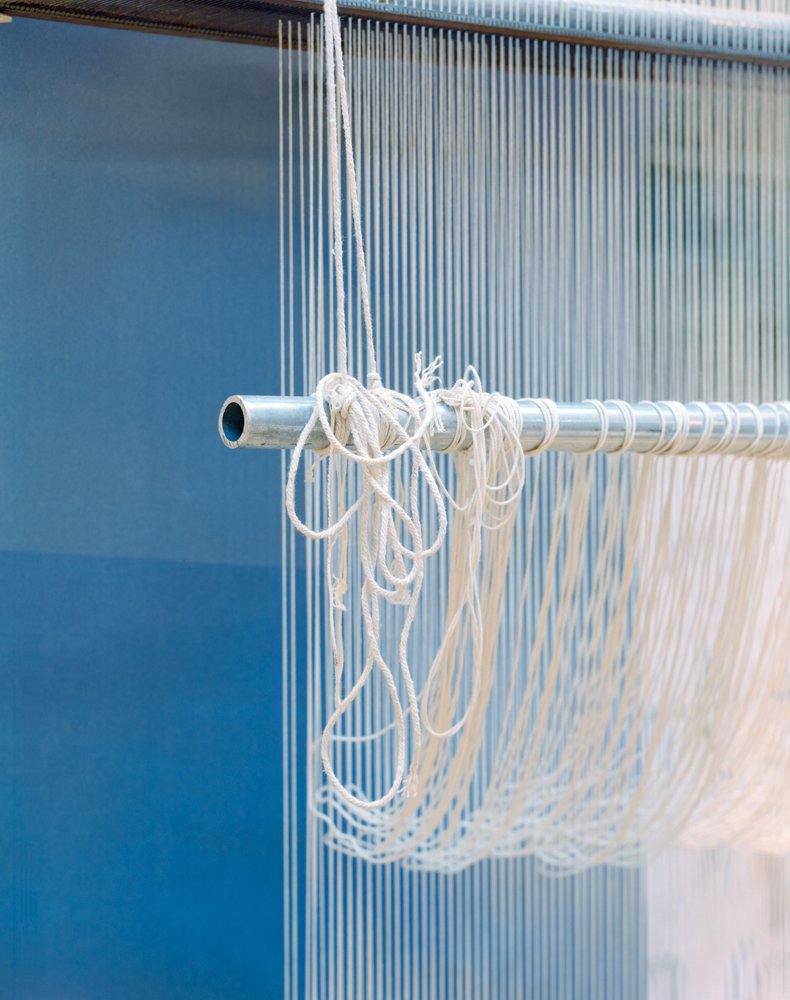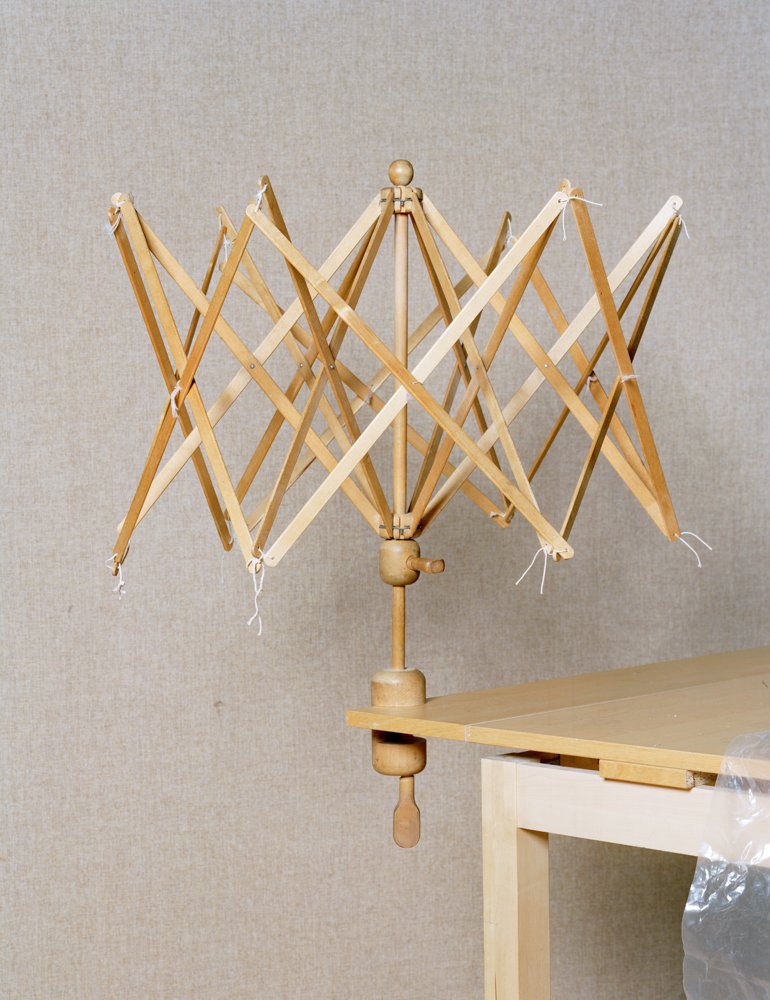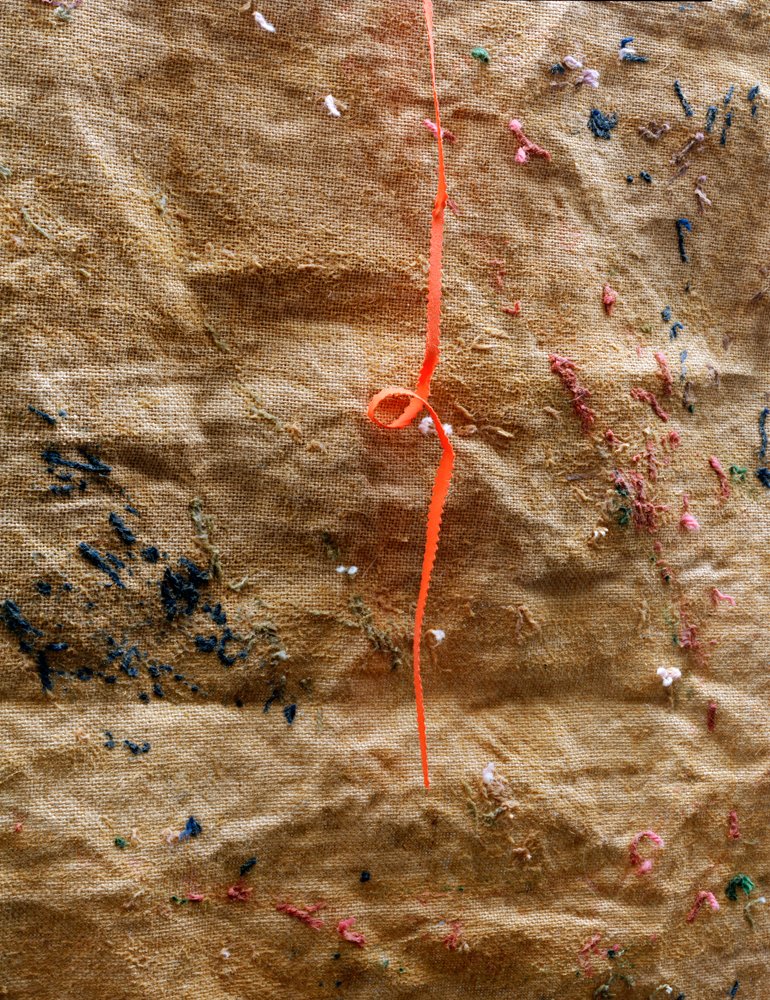As part of the 10-year anniversary of Dovecot’s new life at the old Infirmary Street Baths, Edinburgh, artist David Penny has created an exhibition of photography and video work interpreting the extraordinary craftsmanship of the weavers at Dovecot Tapestry Studio. Penny is interested in the materiality of objects and the aesthetics of technology as well as the actions of the body.
The project comprises images, which offer a focus on the forms, gestures and structures of the process of weaving and suggests parallels between the disciplines of photography and tapestry.
From footage and frames collected during a period of visits to Dovecot during 2017, this work sheds new light on the exceptional craftsmanship and making in Scotland.
Giangiacomo Cirla: Hello David, how are you and how do you feel about your first solo show in Scotland?
David Penny: I’m really excited to see the project come together as an exhibition. The process always feels a little uncertain up until this point, mainly in terms of how the works will actually work in the space as they undergo the move from the studio environment to the gallery.
It’s looking great and I’m very happy with the results. Working with moving image has been a new process for me, and I wanted to ensure that a dialogue was created between this element and the photographic pieces. I’ve been particularly thinking about the curation of the works – their specific location and lighting in the space – and how they might interact with the architecture of the space and the projected work. I’ve to try to create resonant moments for the visitor as they watch the film work surrounded by the photographic pieces.
GC: How did you first come to Dovecot?
DP: The project was initiated through a visit to Dovecot a couple of years ago. I teach photography in the Media Department at Manchester School of Art and colleague who knows my practice well suggested I would find the space interesting and potentially useful in relation to some research for studio work I was developing at the time, which was located around the industrial photography of Walter Nurnberg. We visited the elevated viewing balcony, which overlooks the tapestry studio floor. This is where I first saw the weavers working and began to think about the specifics of the space they construct around them. It was this experience and the observations I made there that first sparked off ideas for the project.
GC: …what impressed you the most?
DP: The immersed and focused space the weavers seem to enter when working has always been so intriguing. Over time I have enjoyed learning about their discipline but there is so much to this specialist craft that just cannot be appreciated by most of us. The physical actions of each weaver appear simple at first, but each pass of the bobbin through the warps embodies a tacit and embedded bodily knowledge. I loved spending time observing this activity. Weaving a tapestry takes a long time, sometimes years, but it is by no means a slow physical process They weavers’ movement is quite rapid at time in a contained and controlled space. This was only really revealed when I started shooting footage in the tapestry studio. In addition the small zones set-up around each tapestry and weaver intrigued me as they worked on a piece. The journey of a painting or some other image into a woven tapestry involves a translation of not only the visual image but an interpretation of the materiality of the original medium. For example oil paint behaves differently to a watercolor medium so it’s important that these particular materialities are incorporated into the tapestry piece. The translation process involves lots of different types of images, from photocopies to the cartoon which is used to plan out and trace the different tonal areas of the image on the warps on the loom. The weavers become surrounded by these different images as well as the different colored yarns to be used for the tapestry. I thought of this space as a deconstruction of the material and visual element of the piece with the weaver orchestrating their synthesis.
GC: How did you investigate this tradition?
DP: I made an early visit to Mt Stuart on the Isle of Bute where the Bute archive is held. Within the archive they hold a collection of photographs from the early days of the Dovecot. There are preceding generations to the way studio exists today. The tapestry studio was initially established in 1912 by the Marquis of Bute to create Tapestry for his home at Mt Stuart. The archive has various photographs of the first weavers employed working at the looms it was fascinating to see the same shapes in their bodies as I was seeing when watching the weavers at the Dovecot. There was also pictures that showed some the same of objects or tools that are still in the working studio today. This research very much informed the picture image making process further on in the project. As part of its oral history archive the British library also has a recorded interview with a famous weaver called Archie Brennan. He speaks a great deal about the history of the Dovecot, his life as a weaver and his relationship with the craft over the years. It was helpful to get this sort of personal insight.
The photographic work in this series continues my interest in using the photograph as a productive device in order to create the potential for something new rather than simply making a document of an existing thing. Objects are carefully framed and lit to enable a sort of paradox to take place where the properties of the thing we are looking at are difficult to read – its scale, or weight or even what it might be called– but at the same time we know it is something that has to have existed, it can’t be pure fantasy. My approach is often to work in a studio space where the background or surround of a thing being made into a picture can be controlled and considered as much an object in the composition as the thing itself. In this instance I wanted to work in a different way attempting to create pictures which look at they might have been happened upon in the weaving studio but have actually all been subtly constructed to a greater or lesser extent.
We don’t actually see any of the weaving studio or what it looks like in the photographs, more so fragmentary elements of tools related to technologies of weaving. The picture Studio Floor continues one of the ideas I’m working with in the Wall Painting series. In this picture the flat front that we meet head-on, operates to restrict visual access to space behind. These types of pictures represent the façade of photography in terms of its assumed truth value. The image has this abrupt frontal quality that pushes back at the viewer but it is also a cover-up or a sham when we think more about the representational qualities of the photographic image.
GC: Is there a sense of nostalgia due to the post-industrial context in which the realities , such as the one you document as included?
DP: I have not intended any sense of nostalgia in the work, it is more so about a celebration of the quite specific process of making of the weavers. In a sense the work is about making more generally and a call for a broader consideration of technology. In the film piece the weavers’ hands feature throughout, this was important to encourage a consideration of the hand as a technology itself. This might be considered as a nostalgic desire for the handmade in a post-industrial, digital culture but I think it is really about the need for a fluid interaction between the body and the technology and for us to not make such straightforward distinctions.
GC: What’s next…
DP: I have a group show at Paper Gallery in Manchester at the end of June. I’m showing some new digital painting work which is working with the idea of architectural models.
I’m the beginning a new curatorial project over the summer focused on artists use of 3D print and 3D modeling. I’ll be managing a series of residencies for artist’s who have not previously used the technology in their practice and inviting them to make new work, addressing research questions inherent in their practice. I’m really keen to see how a painter, a film-maker or musician might utilize the technology and to try to push the limits of the technology as a tool for art practice.
–
website: David Penny
–
copyright © David Penny and PHROOM, all rights reserved
–

